Cover design by Karoline Buer. The cover features the typeface Anthony designed by Sun Young Oh, and Gotham designed by Jonathan Hoefler and Tobias Frere-Jones.
Feminist design strategies for transforming design museums
Modern design has played a role in creating the current world, including injustices and current crisis. And the design discipline still contributes to the reproduction of white supremacist imperialist capitalist patriarchy. There is an urgency to transform mainstream design, so that it can become able to stay with past and present trouble, and to contribute to developing more just futures. Design museums hold the potential to facilitate and support such work. However, they often tend to preserve the problematic status quo rather than enable change. Therefore, they must be transformed. This thesis investigates potential and limitations of existing design museums, envisions alternative spaces, and develops feminist design strategies for initiating transformational processes in design museums towards more just futures. The approach taken includes looking to the example of community archives as well as combining concepts and methods from feminist research, design research and onto-cartography.
Modern design has played a role in creating the current world, including injustices and the climate crisis. And the design discipline still contributes to the reproduction of what bell hooks calls white supremacist imperialist capitalist (hetero)patriarchy that distributes privilege and oppression. At best, design supports us; at worst, it hinders or even harms us. Our experience depends on our gender and sexuality, whether we are able-bodied or not, our skin colour, our class, and many more aspects. There is an urgency to transform mainstream design, so that it can become able to not only stay with past and present trouble, but also to contribute to developing more just futures.
Spaces that can facilitate and support such work are needed. Presently, design museums come closest to serving this kind of role. They are mainly public spaces that hold much power and infrastructural resources. They not only represent design to design students, designers, and the wider public. Design museums also have the potential to support discussions on complex issues without the pressure to immediately come up with solutions. However, they are not yet capable of contributing to redesigning design, since they often tend to preserve the problematic status quo rather than enable change. Therefore, these established design museums must be transformed to become able to realise their potential to serve the required role. This thesis investigates potential and limitations of currently existing design museums, envisions alternative spaces, and develops feminist design strategies for initiating transformational processes in design museums towards more just futures.
The approach taken includes looking to the example of community archives as well as combining concepts and methods from feminist research, design research and onto-cartography in ways that leverage their synergies to enable a sense-making of design museums’ involvement with systems of oppression, as well as a development of alternative visions and strategies for intervening and transforming. Community archives make accessible alternative histories, and therefore enable alternative ways of dealing with the present and of envisioning alternative, more just futures. They not only hold deep understandings of oppressive systems and how they are reproduced in daily life and the material world, but also continuously develop creative ways of resisting and, most importantly, initiating transformational processes.
Through this framing, the more specific research question developed is: Which feminist design strategies could support initiating transformational processes in design museums aiming towards more just futures? This research question was addressed through a feminist design methodology that combines feminist and design research. Specific methods used include inventories, museum visits, workshops, consulting secondary literature, illustrations, and visual analysis.
The research project resulted in an investigation of established design museums, the formulation of characteristics of alternative design museums which are envisioned as metabolic design museums, and the development of feminist design strategies for initiating transformational processes in design museums. Based on the results, this thesis contributes to design research ways in which the role of design and its established institutions in reproducing white supremacist capitalist patriarchy can be understood and analysed. Furthermore, it makes a methodological contribution to both feminist research and design research by combining these two fields, in parts with the help of onto-cartography, to leverage their synergies. Finally, this thesis – as well as the research process that led to it – contribute to activism in the field of design by scaffolding ways in which design could be transformed so that it becomes more able to unfold its potential to contribute towards the development of more just futures.
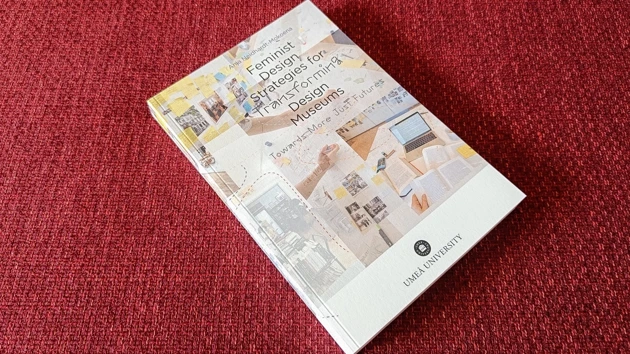
![Is a design museum a home for designed objects? Is it a space that we, as visitors, cannot make home? Permanent design exhibition at Grassi Museum für Angewandte Kunst [Grassi Museum of Applied Arts] in Leipzig. Museum visit, 2 Sep 2022.](/ubnoy/globalassets/mediaflow/phd_anja_neidhardt_mokoena_material_museum_visit.webp?width=630&quality=90)
Is a design museum a home for designed objects? Is it a space that we, as visitors, cannot make home? Permanent design exhibition at Grassi Museum für Angewandte Kunst [Grassi Museum of Applied Arts] in Leipzig. Museum visit, 2 Sep 2022.
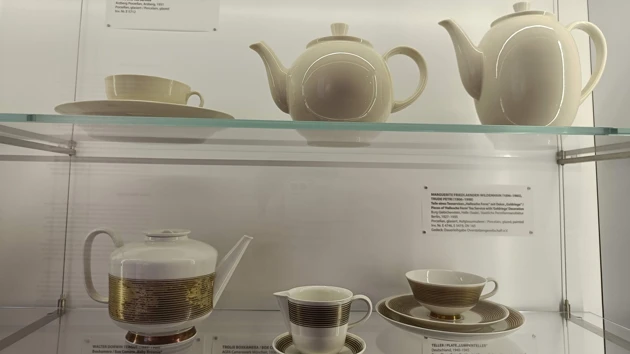
In most design museums, pots, jars and bottles are exhibited in vitrines, and there is no space for those bottles which are in use – they need to be hidden from visitors’ and superiors’ eyes. Figure 4.45: Museum visit, 2 Sep 2022; Figures 4.46 and 4.47: Museum visit, 18 June 2022.
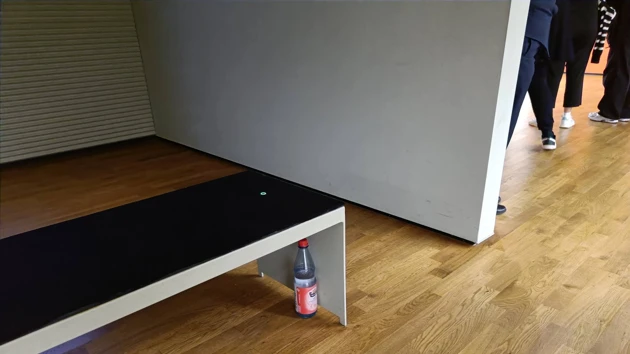
The water bottle in this image is only one of a few designed objects in this permanent design exhibition doing what it is designed to do: storing water and providing it to a gallery attendant as an act of care – keeping a human being alive. Museum visit, 2 Sep 2022
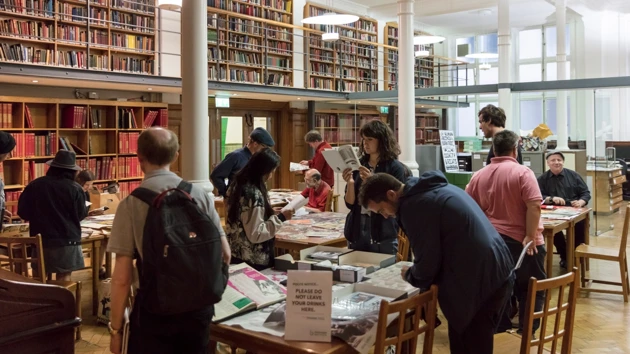
Within the frame of its Special Collections and Archives, the Bishopsgate Institute hosts workshops focusing on different topics in which participants are allowed to explore the collections and arrange material in ways that enable their own sense-making and interpretation of the topic. The photo shows the Art Night Zine Making Workshop at Bishopsgate Institute’s Special Collections and Archives. Photo: Dan Weill.
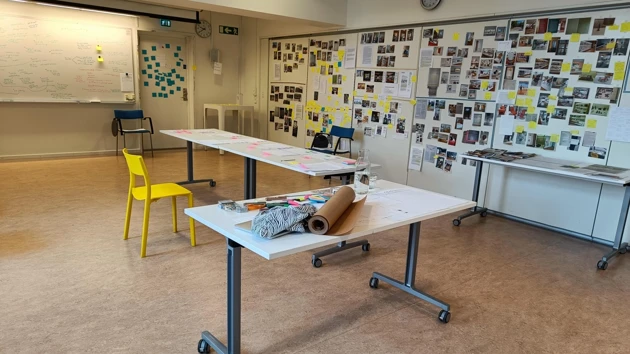
For the analysis and sense-making of the gathered material I booked a room in the design institute, called the blue room, where I could hang all material and immerse myself in it.
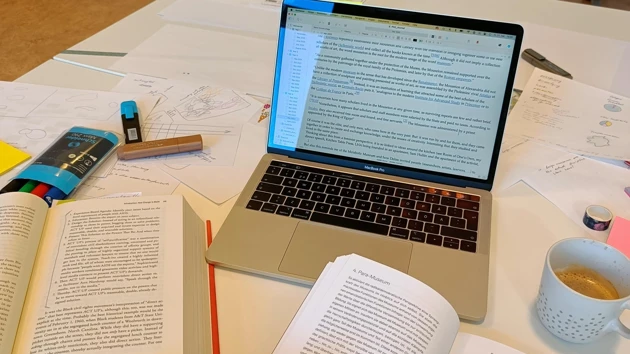
During the sense-making process, I often had many books open at the same time, reading them in parallel while also reading the visual material, creating illustrations, and writing down my thoughts.
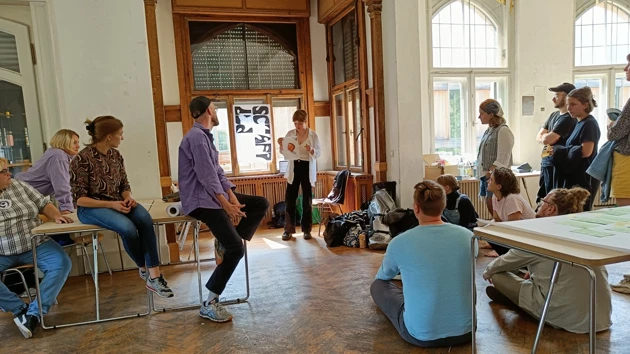
Workshop at SmP Academy 2022 at Burg Giebichenstein University of Art and Design, Halle, 1 – 4 Sep 2022.
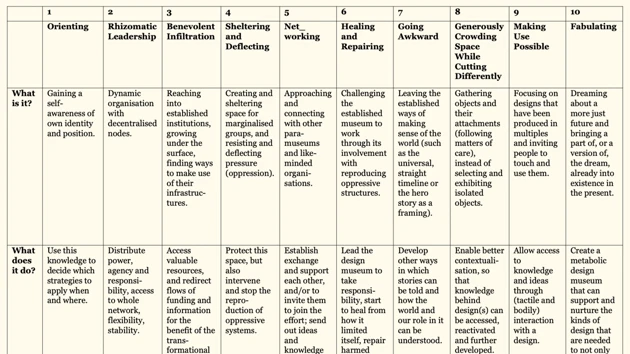
In this research project, feminist design strategies are framed as ways of transforming established design institutions towards more justice.
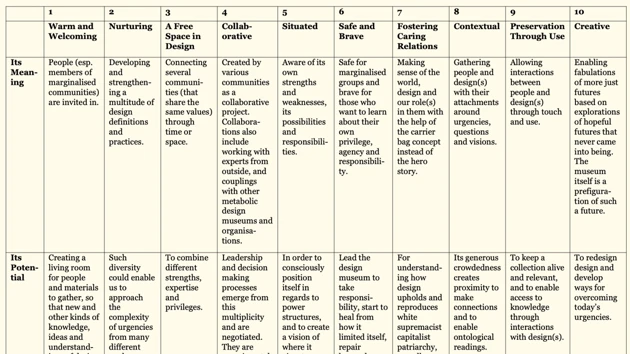
From analysing eight key assemblages of current design museums in juxtaposition with inspiration from community archives and already transforming museums, characteristics emerge for a possible metabolic design museum.
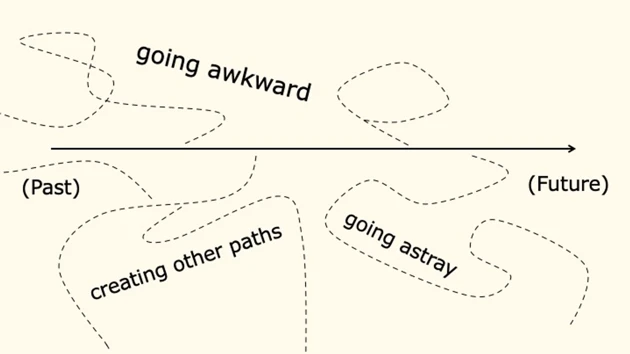
When going awkward (a term borrowed from Báyò Akómoláfé (Pivot, 2021)), other paths can be created that will hopefully allow for alternative trajectories to open up, and to envision alternative design museums.


![Is a design museum a home for designed objects? Is it a space that we, as visitors, cannot make home? Permanent design exhibition at Grassi Museum für Angewandte Kunst [Grassi Museum of Applied Arts] in Leipzig. Museum visit, 2 Sep 2022.](/ubnoy/globalassets/mediaflow/phd_anja_neidhardt_mokoena_material_museum_visit.webp?width=1106&quality=90)








